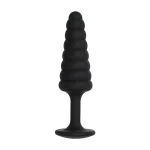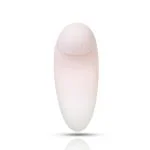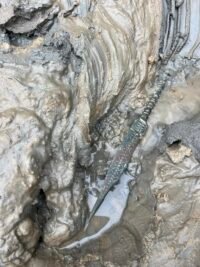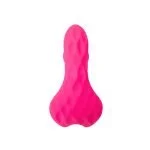A mosaic floor removed from a Roman villa at the ancient Pompeopolis site in northern Turkey has been cleaned, preserved and reinstalled in its original location.
Pompeopolis is located in the region of Paphlagonia and was founded by the Roman general Gnaeus Pompey (also known as Pompey) after his defeat of Mithridates of Pontus in 65/64 BC. Pompey purposely built new cities in the former kingdom of Pontus to seal off northern Anatolia from Rome. Pompeopolis flourished during the Roman Empire, earning the title “Metropolis of Paphlagonia”. For a brief period in the mid-2nd century it even minted coins.
The villa where the mosaics were found covers an area of over 19,000 square feet and is one of the four largest villas in Anatolia. It was built in the 170s AD and was used until the 550s AD. To date, archaeologists have been unable to determine who the villa belonged to at any time, as there are no identifiable inscriptions. The size and luxurious furnishings of the villa suggest that its residents were some of the city’s prominent and wealthiest residents, most likely local magistrates.
 Excavations revealed that the floors of some rooms were covered with a huge mosaic. This is a later extension of the villa, installed in the 4th century. The room where the mosaic is located had a fire in ancient times and the heat damaged the mosaic tiles. Moisture penetration exacerbates the damage, corrugating the floor and accelerating the deterioration of the screed until it no longer adheres the mosaic tiles to the floor. When archaeologists unearthed the mosaic, most of the tiles had fallen off and the damage was so severe that they estimated the mosaic would be completely destroyed within three to five years.
Excavations revealed that the floors of some rooms were covered with a huge mosaic. This is a later extension of the villa, installed in the 4th century. The room where the mosaic is located had a fire in ancient times and the heat damaged the mosaic tiles. Moisture penetration exacerbates the damage, corrugating the floor and accelerating the deterioration of the screed until it no longer adheres the mosaic tiles to the floor. When archaeologists unearthed the mosaic, most of the tiles had fallen off and the damage was so severe that they estimated the mosaic would be completely destroyed within three to five years.
“Floor mosaics reflect the fashion of that period and consist of finely crafted small colored stones formed into various figures and patterns. Today we use rugs, but in that period geometric patterns similar to rug designs were used. During the restoration , we don’t do any rebuilding or finishing. And put it back. Completing the mosaic can be challenging because even the smallest application during the process can have negative results. method without adding anything,” he said.
Archaeologists moved the tiles to the laboratory of the Department of Archeology, Faculty of Arts, Karabuk University, where they were cleaned, cataloged and rearranged one at a time in their original configuration. The completed mosaics have now been reinstalled on the floors of the villa without any loss of tiles.


 Anal Beads
Anal Beads Anal Vibrators
Anal Vibrators Butt Plugs
Butt Plugs Prostate Massagers
Prostate Massagers
 Alien Dildos
Alien Dildos Realistic Dildos
Realistic Dildos
 Kegel Exercisers & Balls
Kegel Exercisers & Balls Classic Vibrating Eggs
Classic Vibrating Eggs Remote Vibrating Eggs
Remote Vibrating Eggs Vibrating Bullets
Vibrating Bullets
 Bullet Vibrators
Bullet Vibrators Classic Vibrators
Classic Vibrators Clitoral Vibrators
Clitoral Vibrators G-Spot Vibrators
G-Spot Vibrators Massage Wand Vibrators
Massage Wand Vibrators Rabbit Vibrators
Rabbit Vibrators Remote Vibrators
Remote Vibrators
 Pocket Stroker & Pussy Masturbators
Pocket Stroker & Pussy Masturbators Vibrating Masturbators
Vibrating Masturbators
 Cock Rings
Cock Rings Penis Pumps
Penis Pumps
 Wearable Vibrators
Wearable Vibrators Blindfolds, Masks & Gags
Blindfolds, Masks & Gags Bondage Kits
Bondage Kits Bondage Wear & Fetish Clothing
Bondage Wear & Fetish Clothing Restraints & Handcuffs
Restraints & Handcuffs Sex Swings
Sex Swings Ticklers, Paddles & Whips
Ticklers, Paddles & Whips




















